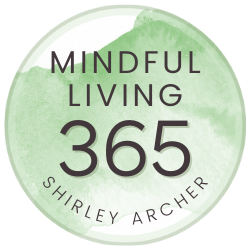WHY MOUTH BREATHING IS A HABIT WORTH CHANGING
EVIDENCE BASED
Proper breathing mechanics are essential for optimal function, good posture and core stability. During ideal breathing, the diaphragm descends symmetrically on inhalation; the lower rib cage moves proportionately to the front, back and sides; and the abdominal wall expands. At the end of each inhale, the breastbone moves forward and ribs expand. These internal movements allow the belly to expand on the inhale and contract on the exhale.
Poor breathing patterns can increase the body’s acidity by changing pH levels, amplify fatigue and musculoskeletal pain, compromise trunk stability, cause premature breathlessness, impair sleep, and more. Common breathing pattern dysfunctions include asymmetric movement during the breath cycle (one inhale and one exhale); excessive upward movement of the breastbone and shoulders with little abdominal movement on inhalation; and paradoxical breathing, with the abdomen drawing inward on inhalation and expanding on exhalation.
Mouth Breathing Versus Nose Breathing
Mouth breathing is a habit worth breaking to improve health, sleep and overall quality of life, according to a growing body of research. Habitual mouth breathing contributes to sleep disruption, heightened stress, ADHD and other health issues, according to researchers. Paul Ehrlich, PhD, Bing professor of population studies, emeritus, at Stanford University, is a proponent of oral posture exercises to support the jaw and prevent mouth breathing.
“Surprisingly, jaw shrinkage since the agricultural revolution, leading to an epidemic of crooked teeth . . .and constricted airways, is a major cause of sleep-related stress” notes authors of a review study published in Bioscience—including Ehrlich and stress researcher Robert Sapolsky, PhD, Stanford professor of neurology and neurosurgery.
Sleep disruption is a contributing factor to numerous health conditions, including high blood pressure, type 2 diabetes, heart disease, obesity, and depression.
More benefits of nose breathing versus mouth breathing include warming, moisturizing and filtering air before it enters the lungs. Nasal breathing also increases production of nitric oxide (NO), which is very important in oxygen uptake and healthy arterial function. Additionally, NO levels affect immune function, weight and mood.
Breath Effects on Athletic Performance
In the 1990s, John Douillard, DC, CAP, author of Body, Mind, and Sport (Harmony 2001), an early proponent of nose breathing’s benefits during endurance sports, conducted research on professional athletes he was training. Douillard and a team of researchers found that athletes trained in nose breathing experienced consistently and significantly lower breath rates and lower perceived exertion levels while simultaneously experiencing significantly longer endurance, among other outcomes.
More recent research conducted at Colorado State University confirms these findings. In a small study, 10 healthy male and female runners underwent exercise testing using only mouth breathing and, separately, only nose breathing. When restricted to nose breathing, the participants could run at all intensity levels without loss of VO2max and with superior breathing efficiency. However, these runners had practiced nasal breathing exclusively for 6 months before the study—and the scientists noted that the improvements in breathing efficiency occurred “following an extended period of time spent adapting to this practice”.
Note that for high-intensity exercise, nasal breathing is not efficient or even possible. It’s ideally suited for moderate, steady-state cardiovascular activities, such as long-distance running or cycling.
When people start training with nose breathing only, they typically experience worse performance before they realize gains.
Have you downloaded your Path to Peace Free Guided Journal?
Go from feeling anxious and stressed
to calm and at-ease in 5 simple steps!
I’m a wellness visionary, integrative health educator and embodied mindfulness expert.
If this post helped you, please share by using the social buttons above. I appreciate your support!
Improving Nose Breathing
Leading Buteyko Method expert Patrick McKeown, an Oxygen Advantage® master instructor in Galway, Ireland, offers an effective exercise for unblocking the nose:
NOSE UNBLOCKING
Sit, stand, or lie supine.
Exhale slowly through the nose.
Pinch nose with fingers to hold breath.
While holding the breath, nod head gently up and down.
Hold breath until there is a medium-to-strong need for air.
Release nose and breathe through it.
Calm breathing as soon as possible.
Rest 1 minute, breathing normally.
Repeat five times.
Additional Tips for Breathing Improvement
Alternate nostril breathing, often taught in yoga classes.
Clean the nose, through blowing it with a tissue, inhaling saline spray or rinsing with a sterile solution.
((P1 subtitle for all of the following content))
2-Minute Guided Breathing Meditation
((P2 text)) If you prefer to listen to podcasts, you can download this onto your smart phone:
Visit my YouTube channel to subscribe for more tips. Have you downloaded Your Path to Peace? Go from stressed and anxious to calm and at ease in 5 simple steps.
If this post helped you, please share with friends now, by using the buttons below. Thanks!






